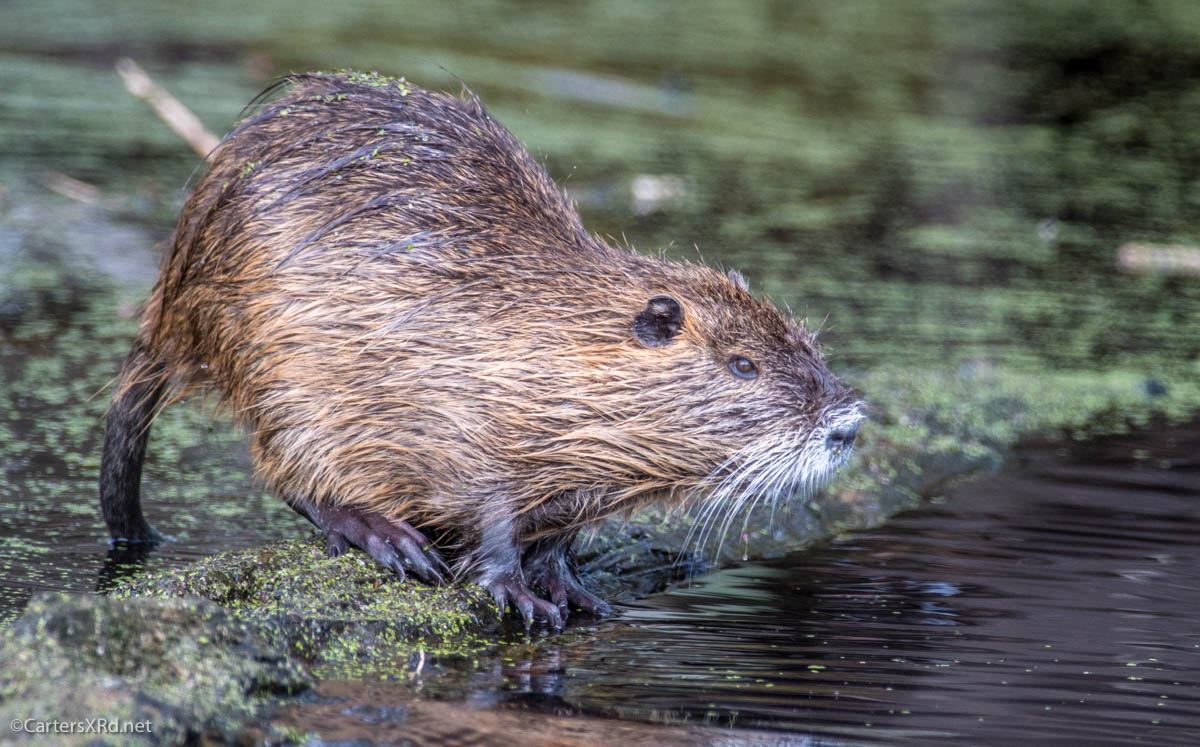|
| Distribution |
Lee et al. (1982) stated that the Nutria, as it is better known in the United States, was "Originally released on the Outer Banks near Hatteras in 1941". From there it has spread to essentially all marshes in the Pamlico Sound/Albemarle Sound/Currituck Sound region, and is making its way southward along the coast and much farther inland. As of 1985, there was only one far inland record -- Rockingham County; however, it now occurs over most of the Coastal Plain, and into the extreme eastern Piedmont. Thankfully, it still seems not to have made its way west into the Sandhills region or to counties that border SC, as our known records seem to be west only to Sampson, Harnett, Wake, and now Cabarrus (in 2025) counties.
The native range is the southern part of South America. They have been introduced to several parts of the Gulf and Atlantic coasts, for trapping purposes for its fur, especially in LA and TX. |
| Abundance |
Common to locally abundant in coastal marshes, south to Pamlico Sound. Less common farther south along the coast, and elsewhere in the Coastal Plain (except the Sandhills region), where still mainly rare to uncommon. Scarce in the eastern Piedmont, though many records for Wake County. Increasing in range and abundance in the state, but this expansion seems to have slowed in recent years. |
| Seasonal Occurrence |
Active year-round. |
| Habitat |
Favors areas of fresh and brackish marshes, where they consume large amounts of grasses. They also occur at lakes, ponds, and impoundments, as well as in salt marshes. Habitats tend to be sunny and well away from forested areas. |
| Behavior |
Though active mainly at night, they frequently can be seen during the day, but they are not as active as after dark. They spend much time in the water, but frequently occur on the ground, and are often seen around the margins of impoundments and ponds. They create extensive systems of burrows, often weakening dikes of ponds and impoundments. |
| Comments |
Not surprisingly for a non-native mammal, the Nutria [Coypu is the official name of the species, and is the name applied to the species in its native range in the Neotropics] is a major pest almost everywhere it occurs. It competes with the Muskrat for food and habitat, and it denudes marshy areas, and thus competes with native species such as swans and geese for forage. The burrows in dikes weaken these man-made structures and can thus cause ponds and impoundments to drain or breach at the dike. They also forage on crops in nearby fields, doing financial damage to farmers. |
| Origin |
Introduced |
| NC List |
Official |
 State Rank State Rank |
SE |
| State Status |
|
 Global Rank Global Rank |
G5 |
| Federal Status |
|
| subspecies |
Myocastor coypus bonariensis |
| other_comName |
Nutria |
| synonym |
|



